How To Plant Anything
The garden centre is full of incredible trees, shrubs, perennials, and blooming flowers, offering endless inspiration for gardens of your dreams. A spring shopping trip inevitably ends in a trunk full of plants, soil and must-have accessories, fueled by the excitement of the season ahead. Once the plants are home, though… what next? Planting your new plants properly is an essential step in ensuring their growth and beauty. Here’s how to plant anything, with our tips for getting off to the best start.
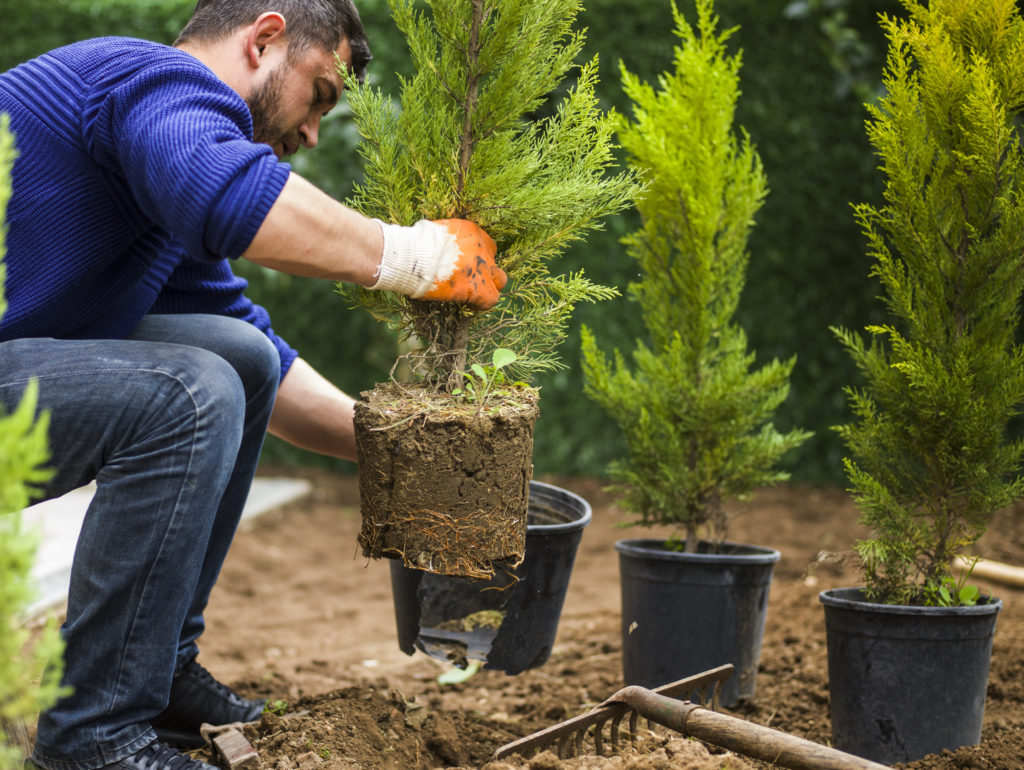
How To Plant Trees & Shrubs
Materials you need:
A spade or shovel for digging
Triple mix, like TERRA Plus 3 Mix
Transplant solution, like Miracle-Gro® Quick Start®
Water source, and watering can
- In advance of planting, thoroughly water the plants in their pots. Transplanting can be stressful, so hydrated plants will transition more easily.
- Select a site that suits the tree or shrub. Is it sunny or shady? Sandy or wet?
- Dig a hole as deep as the pot, and twice as wide. Pile the native soil off to the side.
- Add a 2-3″ layer of triple mix to the bottom of the hole.
- Remove the plant from the pot*. If the roots are heavily tangled or wound up in a circular pattern, gently loosen them with your fingers to encourage them to grow outward. *If your plant is in a cardboard or fibre pot, you don’t need to remove it. Slice or score the sides with a sharp knife.
- Place the plant into the hole. Step back and look at it. Rotate or adjust the plant so that it faces the direction you like best, and adjust the depth to ensure it’s sitting at the same level in the ground as it was in the pot.
- Fill in the hole with a 50/50 mixture of the original soil and the triple mix. Gently press the soil to support the plant in place, but don’t stomp or heavily compact the soil.
- WATER deeply and thoroughly, using Miracle-Gro® Quick Start® as directed to help roots establish faster. If the soil settles after watering, add more as needed, adjusting plant height if required. Keep your newly-planted material well watered for 2 weeks, then begin to allow the soil to dry between supplemental waterings in dry periods. This will encourage a deep, strong root system.
- Optional: Applying a layer of mulch to planted areas can help to keep roots more cool and moist in hot, dry periods. Mulch also helps to reduce the growth of weeds, making garden beds easier to maintain.
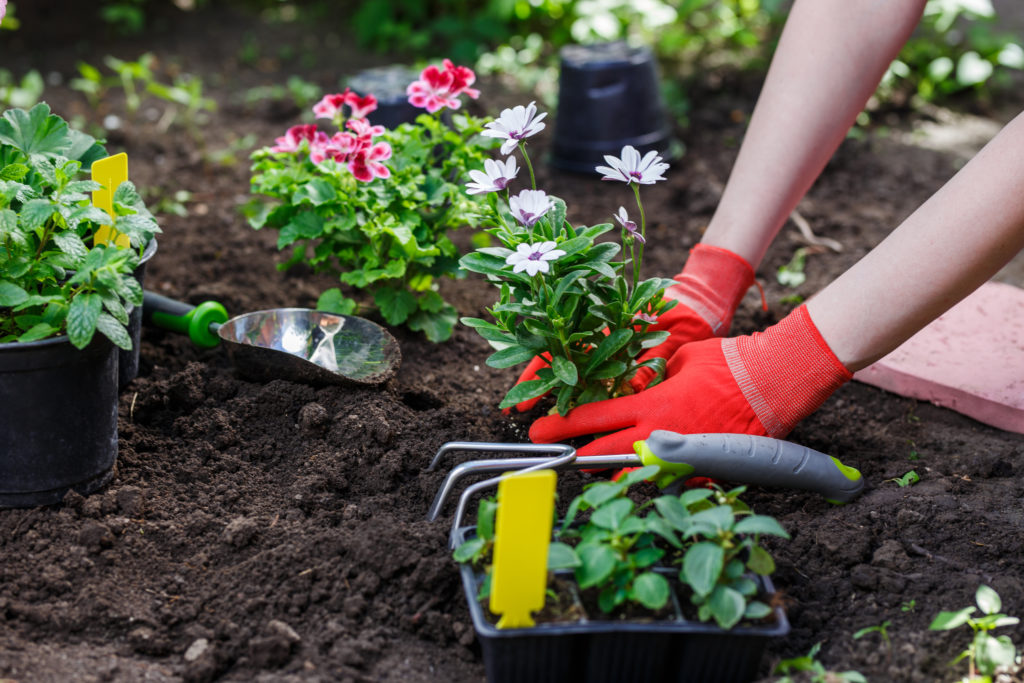
How To Plant Perennials & Annual Flowers*
Materials you need:
Garden tools. A spade or shovel for large areas, or a trowel or garden knife for planting smaller flowers
Triple mix, like TERRA Plus 3 Mix or other garden amendments like compost
Transplant solution, like Miracle-Gro® Quick Start®
Water source, and watering can
- In advance of planting, thoroughly water the plants in their pots. Transplanting can be stressful, so hydrated plants will transition more easily.
- Select a site that suits the needs of the plants. Choose shady or sunny spots accordingly.
- Add triple mix, supplemental soil amendments or compost to the areas you’ll be planting, gently working it into the surface with a shovel, cultivator, or rake.
- Before planting, place the potted plants into the garden, to visualize how it will look. Read plant tags for recommended spacing… plants want to grow, so give them the space they need! Perennials and flowers often look best in small drifts or groupings.
- Begin planting. Remove plants from pots or packs, gently loosen tight roots if needed, and dig into the amended soil. Press gently to secure plants in place, ensuring they sit at the ground level as they had in their pots.
- After an area is planted, water it thoroughly. Use Miracle-Gro® Quick Start® as directed to help roots establish faster. Avoid walking in the planted area while plants are getting established.
- Keep your newly-planted material well watered for 2 weeks, then begin to allow the soil to dry between supplemental waterings in dry periods if tolerated. Some annual flowers will need regular watering all season.
- Optional: Applying a layer of mulch to planted areas can help to keep roots more cool and moist in hot, dry periods. Mulch also helps to reduce the growth of weeds, making garden beds easier to maintain
- * Annual flowers need steady warm weather, and will not tolerate frost or freezing temperatures. Be sure to wait until risk of frost has passed before planting summer annuals outside.
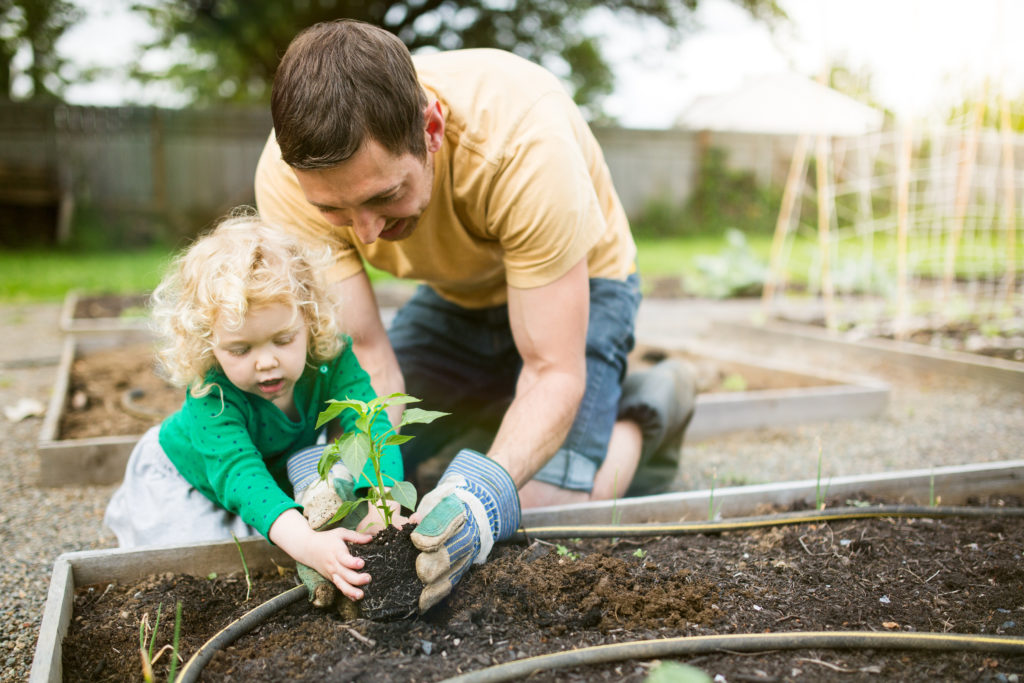
How To Plant Vegetables*
Materials you need:
Garden tools. A spade or shovel for large areas, or a trowel or garden knife for planting smaller vegetable plants
Triple mix, like TERRA Plus 3 Mix or other garden amendments like Miracle Gro Organics Garden Mix for Veg & Herbs. If planting in raised beds, use a blend with great drainage, like Pro-Mix Organic Vegetable & Herb Mix.
Transplant solution, like Miracle-Gro® Quick Start®
Water source, and watering can
- In advance of planting, thoroughly water the plants in their pots. Transplanting can be stressful, so hydrated plants will transition more easily. Gather seed packets and labels for direct-sowing.
- Select a sunny area. Most vegetable plants need at least 6 hours of direct sun to produce. If you’re gardening in shadier conditions, choose shade-tolerant crops like greens, radish, peas, and brassicas.
- Add triple mix, supplemental soil amendments or compost to the areas you’ll be planting, gently working it into the surface with a shovel, cultivator, or rake.
- Lay out your planting areas by placing plants in sections or rows by type. Remember to read and follow spacing recommendations for best plant health and yield.
- Begin planting. Remove plants from pots or packs, gently loosen tight roots if needed, and dig into the amended soil. Press gently to secure plants in place, ensuring they sit at the ground level as they had in their pots. Sow seeds in rows or groupings, following the seed packet directions. Make sure to place labels where everything is planted.
- After an area is planted, water it thoroughly. Use Miracle-Gro® Quick Start® as directed to help roots establish faster. Avoid walking in the planted area while plants are getting established.
- Keep your newly-planted material well watered as it’s getting settled. Keep seeded areas consistently moist to ensure germination. After plants are vigorously growing, provide supplemental waterings in dry periods. Some food crops will need regular watering all season.
- Read more about Growing Food at Home here.
- * Warm season vegetables like tomatoes, peppers, melons, cucumber need steady warm weather, and will not tolerate frost or freezing temperatures. Be sure to wait until risk of frost has passed before planting tender veg plants outside.
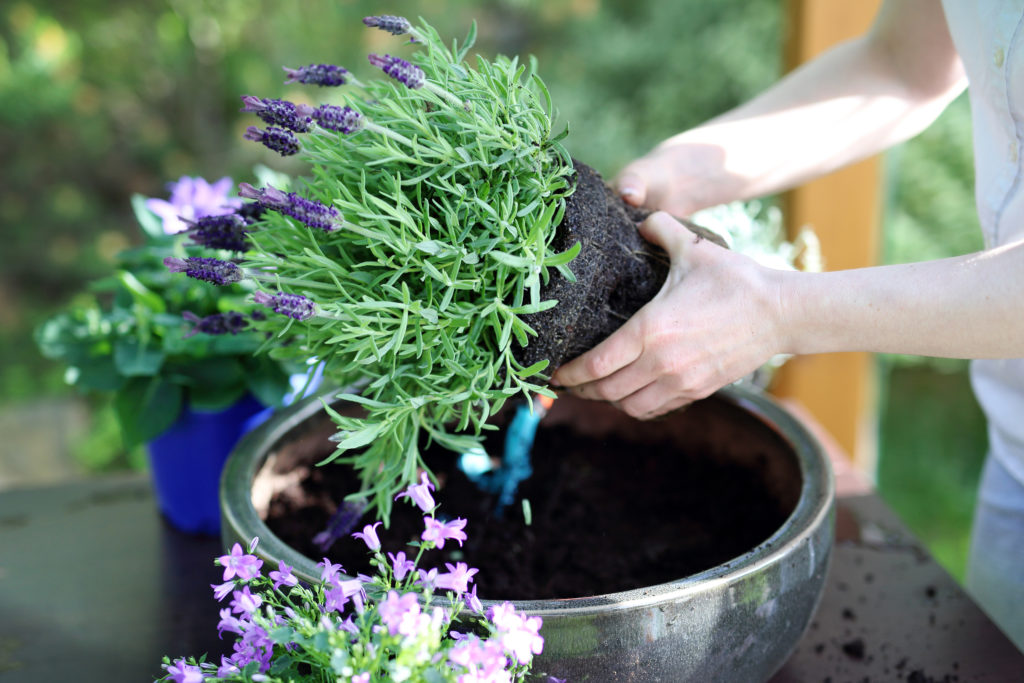
How To Plant In Containers
Materials you need:
A pot or planter made for outdoor use, with holes for drainage
A trowel or garden knife is helpful for digging.
A potting mix made for containers, like Pro-Mix Potting & Container Mix
Transplant solution, like Miracle-Gro® Quick Start®
Water source, and watering can
- In advance of planting, thoroughly water the plants in their pots. Transplanting can be stressful, so hydrated plants will transition more easily.
- Place pots and containers in their locations, observing the conditions of the site and choosing plants that will tolerate the amount of sun there.
- Fill the pot or container halfway with potting mix. For extra large containers, it may be helpful to plant into a smaller insert pot that will sit within the container.
- Remove the plant or plants from their pots, loosening tightly wound roots with your fingers if needed. If planting a single plant, place in the center of the pot. If planting a grouping, place plants in the arrangement desired.
- Fill in around the plant roots, securing plants into place with the potting mix. Press gently but firmly. Ensure plants are sitting at soil level, ideally 1-2″ from the top of the container, to make watering easier.
- Water throughly, allowing excess water to drain from the bottom of the container. Use Miracle-Gro® Quick Start® as directed to help roots establish faster.
- Plants in containers will often need to be watered 2-3 times a week, and in hot summer months, may need water every day. Feed plants regularly for best results.
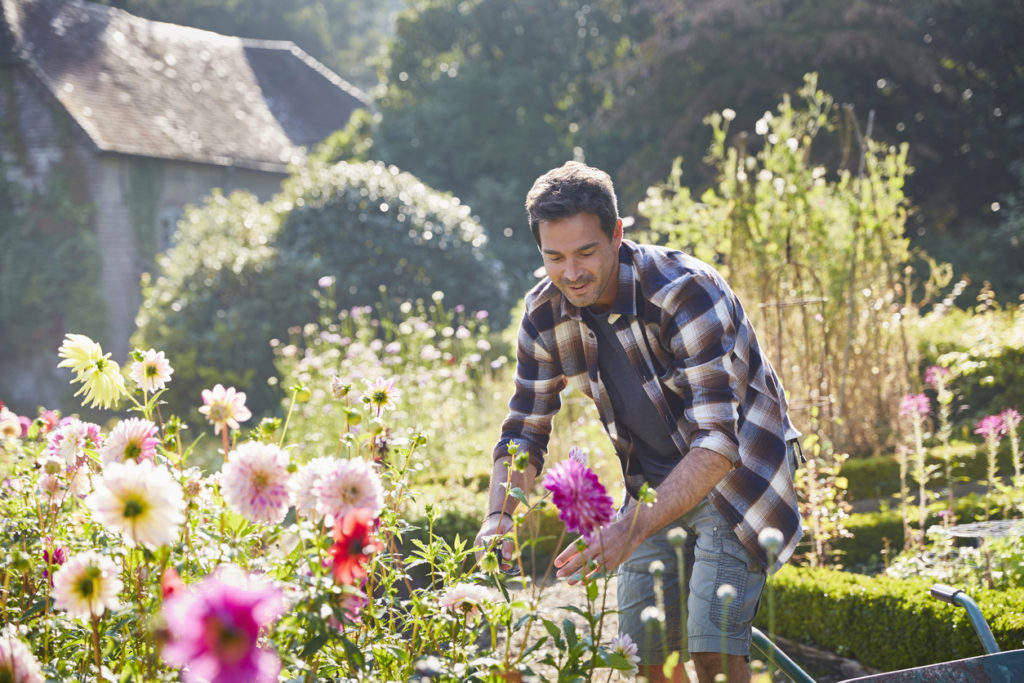
Planting Summer Bulbs, like Dahlias or Gladiolus?
Read Your Guide to Growing Summer Bulbs here!
